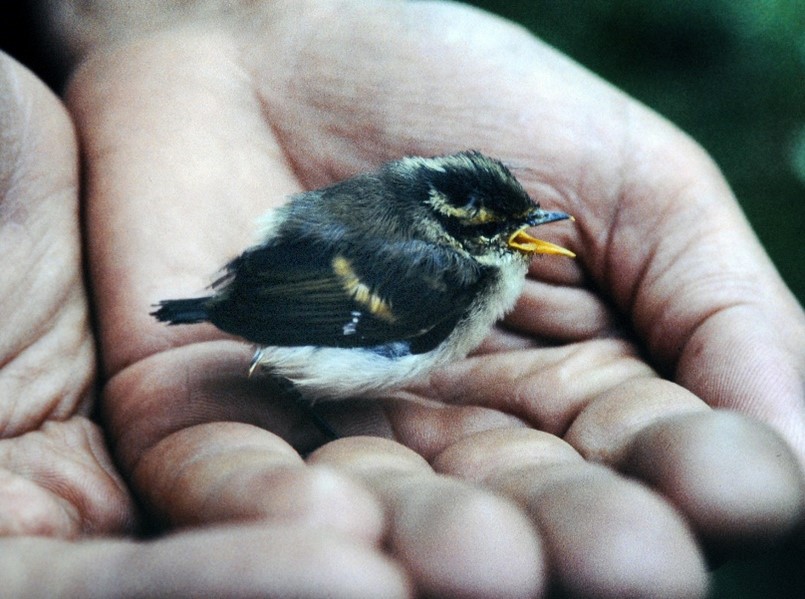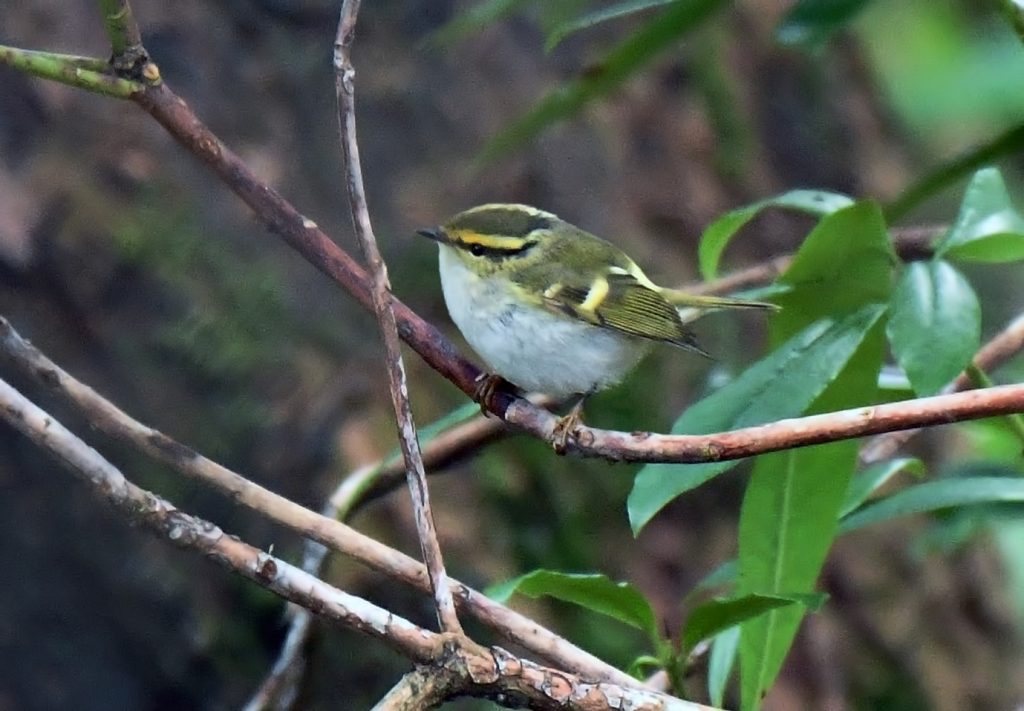When you look at the spread of bird records within Ayrshire, many places jump out of the page as locations which are very well-watched – some, less so. However, the woodland of Auchinleck House is one of those areas into which birders very rarely venture. In truth, there are many such places in the county, and you have to wonder what birds are missed during the course of a year.
The events surrounding the discovery of Ayrshire’s first Pallas’s Warbler illustrate this point, but I doubt if anything quite so bizarre is likely to happen again soon! On the 12th of December, a visiting Australian birder went for a walk near the tearoom in the estate. He wandered along a short, muddy track which led off from the main driveway, and saw most of what might be expected within such a woodland in central Ayrshire in winter – Nuthatch, Treecreeper, Great Tit, Blue Tit, Coal Tit etc. After heading down the driveway, he turned back towards the tearoom area and, for some unknown reason, decided to check out the muddy track once more. The feeding flock of small passerines was still present, but a flash of lemon yellow caught his attention. On closer inspection he could see a small, Goldcrest-sized warbler, with a bright yellow rump and clear yellow central crown stripe. Even better: it stayed long enough in the low bushes for him to get some photographs. Knowing very well just how important this sighting was, he quickly posted the information on a popular bird-recording website.
When the photos appeared later that day, there was a combined feeling of amazement and incredulity among local birders. The bird was reported early the following morning and those birders who could manage to get to the site, did so fairly promptly. Here, it’s important to acknowledge the willingness of the estate to accept a mini-invasion of birders using the tearoom car park. Fortunately, most stayed to have a snack and coffee after seeing the bird, thereby partly repaying the courtesy shown to them.
Just how such a small bird, weighing a mere 5 or 6 grams, manages to make its way from its Siberian breeding grounds to an Ayrshire estate is quite amazing in itself, but Pallas’s Warbler completes similar journeys with some regularity. It should spend the winter months in southern China and parts of south-east Asia, but a few are blown westwards by adverse weather systems each year. finishing up in parts of western Europe.

Within the UK, most are found along the east coast at sites like Spurn and the north Norfolk coast, but the occasional individual turns up at an inland site or on the west coast. The key to the discovery of this latter group lies in the extent of observer coverage in these areas, since many of these Asiatic migrants will arrive in the UK on a fairly broad front. At this point, with regard to the Ayrshire record, it is clear that there were a few factors responsible for its discovery. Firstly, the observer was a very competent birder and, secondly, he just happened to wander into the “right” area of woodland. You can’t beat a bit of luck! Thirdly, he was carrying the field notebook of today’s field observer – a camera – so useful in securing the identification of such a rarity.

During the course of the 13th December, the Pallas’s Warbler showed very well in the Rhododendrons and Holly bushes close to the track. It frequently separated itself from the feeding flock and fed on its own. A very restless, and quick-moving bird, it could prove difficult to follow at times, but always returned to the same patch next to the track. Whether or not the bird actually departed on the 13th will never be known, but it would only have taken a move of a few hundred metres for the bird to have vanished into the woodland, and out of view. Either way, those of us lucky enough to see it on the 13th can be thankful to visiting Australian, Ged Tranter, for getting the word out so quickly.
My thanks in preparing this note are due to Bruce Kerr, who supplied a copy of correspondence received from the bird’s finder.
Angus Hogg
15 January 2022